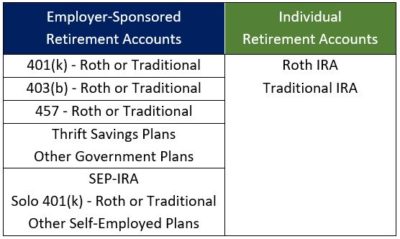Picture your future retirement: You wake up whenever you want; you go play golf, go to the spa, lay on the beach or read a great novel; you spend time with family and friends; you watch TV or nap whenever you want; you spend weeks traveling the world and enjoying delicious meals; or you do whatever the heck else you want!
Alternatively, you can wake up at 5:00am every morning to make your morning greeter shift at the local grocery store; clean toilets and deal with obnoxious customer service calls throughout the day; drive home for a few hours in rush-hour traffic; get flipped off for driving in the left-hand lane; and get home just in time to heat up some leftovers before your body gives out for the day. Which sounds more appealing to you?
Ok, maybe these are extremes, but hopefully you get the point. For most of us, retirement is not the first thing on our minds in our early twenties. Heck, for many people, it’s not even a priority in their thirties, forties or fifties. But it should be.
How Much You’ll Need for Retirement
A popular rule of thumb for how much you need to save for retirement is 10 to 12 times your pre-retirement income. This means that if your household makes $100,000 the year before you retire, you would need $1 million to $1.2 million set aside in retirement savings.
However, how much you need is not a one-size-fits-all: there are numerous factors that go into calculating how much you will need to save for retirement, including your health, whether you have a spouse, your number of dependents, the age you plan to retire, your expected retirement lifestyle/expenses and your retirement income (e.g., Social Security benefits and pension). There are countless retirement savings calculators online, so visit one of these websites to determine how much you will need to save for retirement.
For reference purposes, the average person will need to save around $1 million, and a couple will need to save around $2 million. Some people and couples will need to save much less than this to fund their retirement while others will need to save much more. Especially with life expectancies continuing to increase, this number will continue to rise to pay for the additional years in retirement. Regardless, mentally note that this number is significant. It’s almost impossible to save this amount during your fifties, so it’s crucial to start saving for retirement as early as possible, even if it’s just a little. Living your retirement the way you want means you need to map out a plan today—the first step of that plan is taking advantage of tax-advantaged retirement accounts, including any matches (FREE MONEY) provided by your employer-sponsored plan.
Tax-Advantaged Retirement Accounts
As mentioned in the previous post, First Things First: Your Financial Priorities, investing in tax-advantaged retirement accounts should be your first priority after you’ve established your immediate obligation fund (Priority 1) and emergency fund (Priority 2), maximized your employer match (Priority 3) and paid off all high-interest-rate debt (Priority 4). These retirement accounts are designed by the IRS to supplement your retirement income. While Social Security and/or a pension may be very helpful, they are unlikely to be enough to support your full retirement needs.
Tax-advantaged retirement accounts include the following two separate groups of accounts:

To review, you want to invest in BOTH employer-sponsored retirement accounts and individual retirement accounts, if eligible. Side note: if your employer offers a 401(k) or 403(b) and a 457, you can invest in a 401(k) or 403(b), a 457 and an IRA, each up to different contribution limits.
In future posts, we will detail the specific terms and limits of these retirement accounts and how you should invest in them. One point to highlight now: when investing in tax-advantaged retirement accounts, you should first contribute to your employer-sponsored retirement account in order to receive an employer match (FREE MONEY!), if eligible. If your employer does not offer an employer-sponsored retirement account, you should invest in an IRA to capitalize on the tax savings.
This is a broad overview of your tax-advantaged retirement accounts. Refer to the individual posts for the specific information you need to know for each account that might be available to you.

This is a good advice for beginners, but hopefully you will get into more detail on 401ks and IRAs
Definitely – those posts are on the way!
Gotta love the employer match!
Absolutely. Thanks again for commenting!
Perfect intro to learning more
Thanks, Genny. Appreciate the support!
Didn’t know about the 457 extra option…interesting
It doesn’t get much attention, but definitely important to know if you have a 457
Good message for millennials out there!!!
Thanks for the support, Louise. Please pass along!
For a beginner, I enjoy these basics
Glad to hear it!